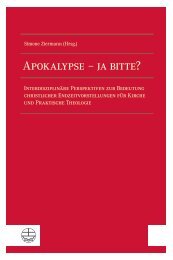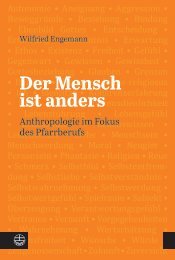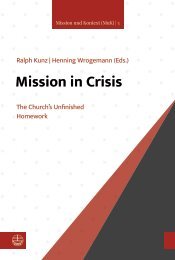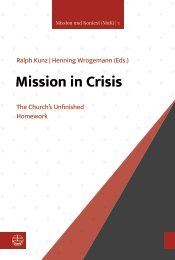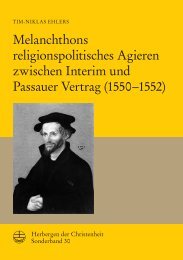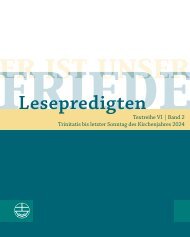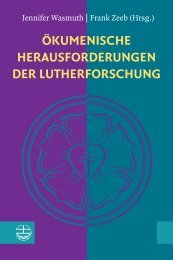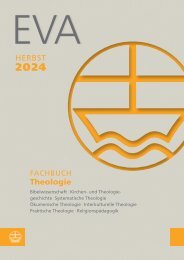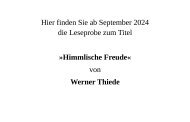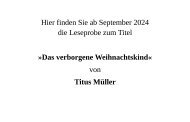Phillip A. Davis, Jr. | Daniel Lanzinger | Matthew Ryan Robinson (Eds.): What Does Theology Do, Actually? (Leseprobe)
Create successful ePaper yourself
Turn your PDF publications into a flip-book with our unique Google optimized e-Paper software.
<strong>Do</strong>gara Ishaya Manomi (Nigeria)<br />
Is it in the Bible?<br />
Re-Negotiating Five Biblical Interpretive Boundaries<br />
Introduction<br />
Biblical exegesis today is ever-shifting among and being re-negotiated in three<br />
different locations: geographical --- from the West to the Global South; methodological<br />
--- from historical-critical methods to contextual and activist-oriented<br />
methods on the one hand, and from the academia to ecclesia on the other hand;<br />
and thematic --- from the familiar biblical themes to issues of more direct contemporary<br />
relevance. While we reflect on, appreciate, and participate in these<br />
relocations of biblical interpretation, it is expedient to reflect carefully on certain<br />
aspects of each. This chapter argues that if biblical interpretation in academia<br />
will continue to serve the church in all three of these locations, as it should, it is<br />
meaningful and even necessary to re-negotiate five interpretive boundaries,<br />
namely, thematic boundaries, semantic boundaries, pragmatic boundaries, appropriative<br />
(applicative) boundaries, and intuitive (personal) boundaries.<br />
Difficulties in interpreting biblical texts today arise due to several factors<br />
such as cultural, linguistic, temporal, and geographical differences or distance<br />
between us and the ancient world. Such difficulties in interpretation are what<br />
Blomberg and Markley describe as ‘‘interpretive problems.’’ While some interpretive<br />
problems require a ‘‘fuller exegetical arsenal, incorporating word studies,<br />
grammatical studies, literary context, and historical-cultural background,’’ 1 other<br />
interpretive problems could be resolved using one or two of these interpretive<br />
tools. <strong>What</strong>ever interpretive tool one uses, certain frameworks or boundaries are<br />
needed to guide one’s interpretation to avoid arbitrary or subjective interpretations<br />
of biblical texts. This chapter, therefore, proposes five interpretive boundaries<br />
or frameworks that would prevent or reduce the possibility of arbitrary and<br />
unaccountable interpretations: the thematic boundary, pragmatic boundary,<br />
semantic boundary, applicative boundary, and intuitive boundary. In this framework,<br />
despite the tendency to overlap, the thematic boundary applies to thematic<br />
1<br />
Craig L. Blomberg and Jennifer F. Markley, A Handbook of New Testament Exegesis<br />
(Grand Rapids: Baker, 2010), 177.





